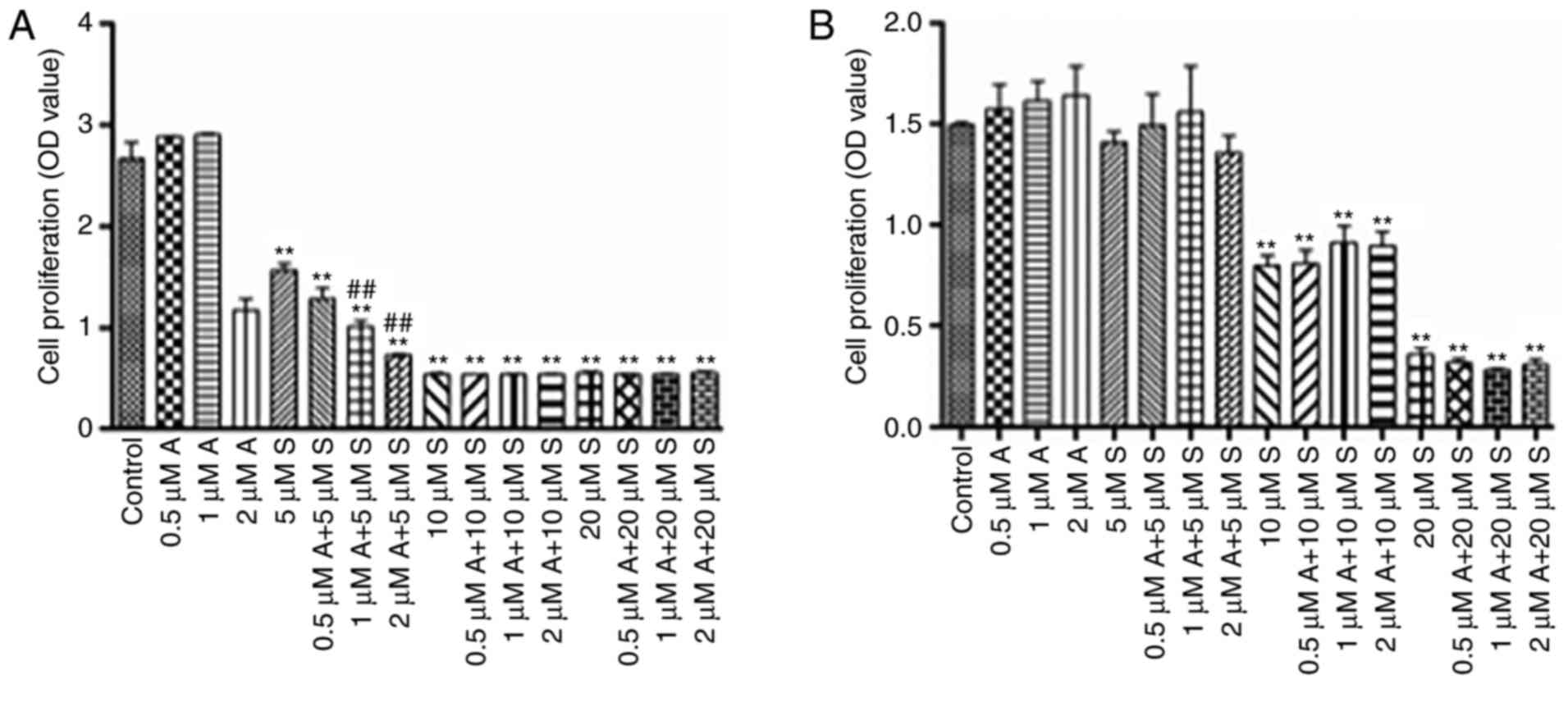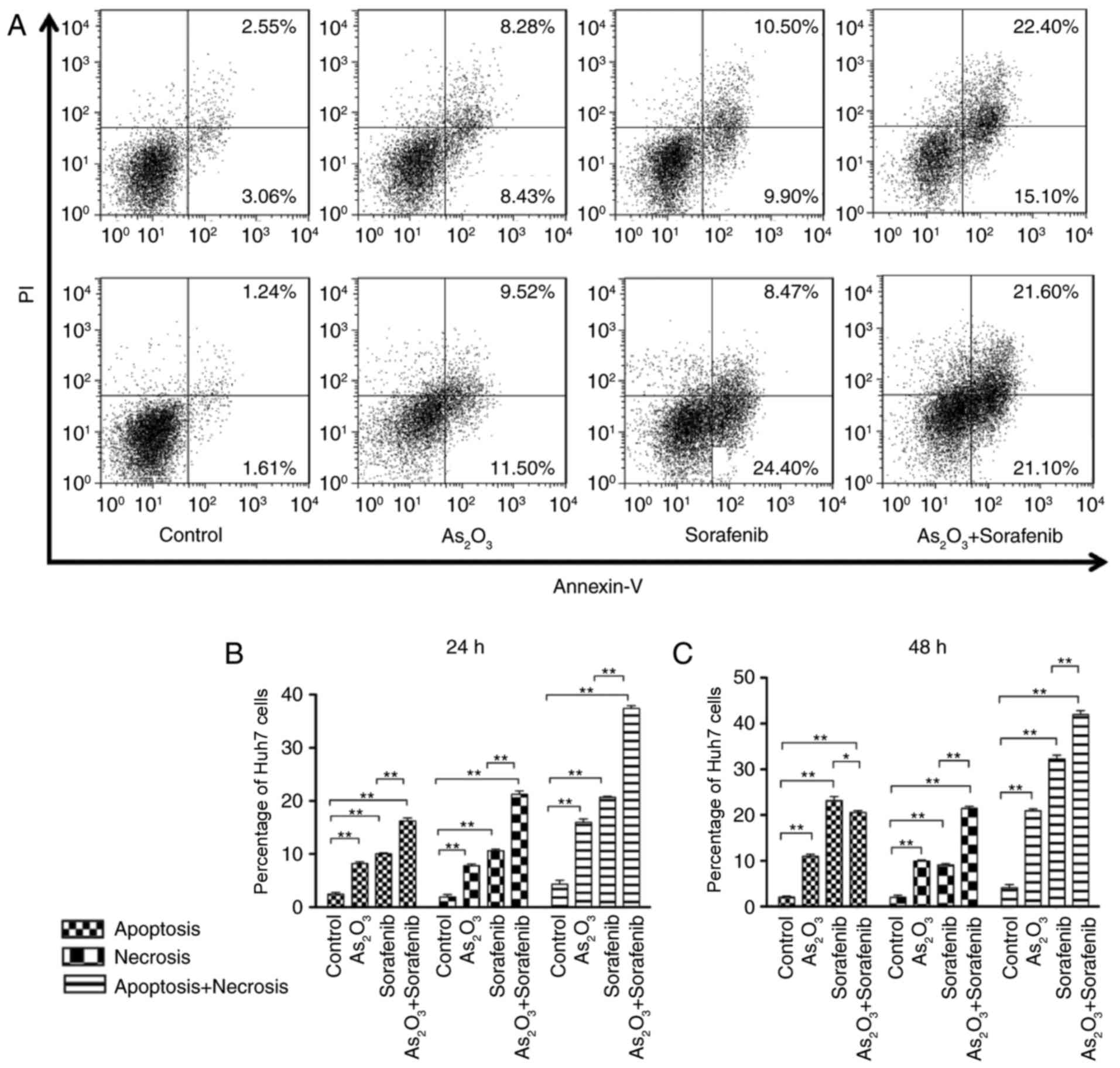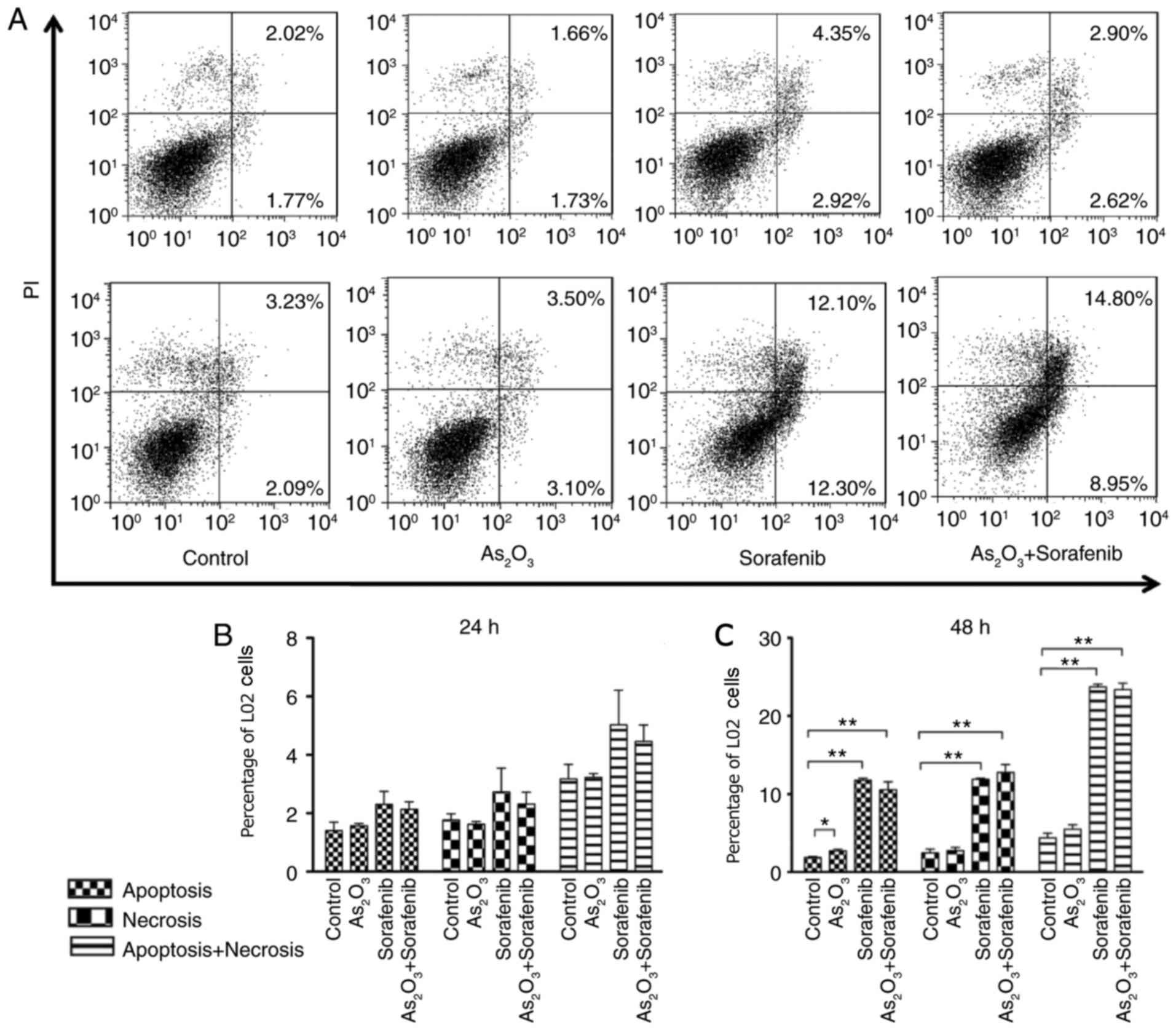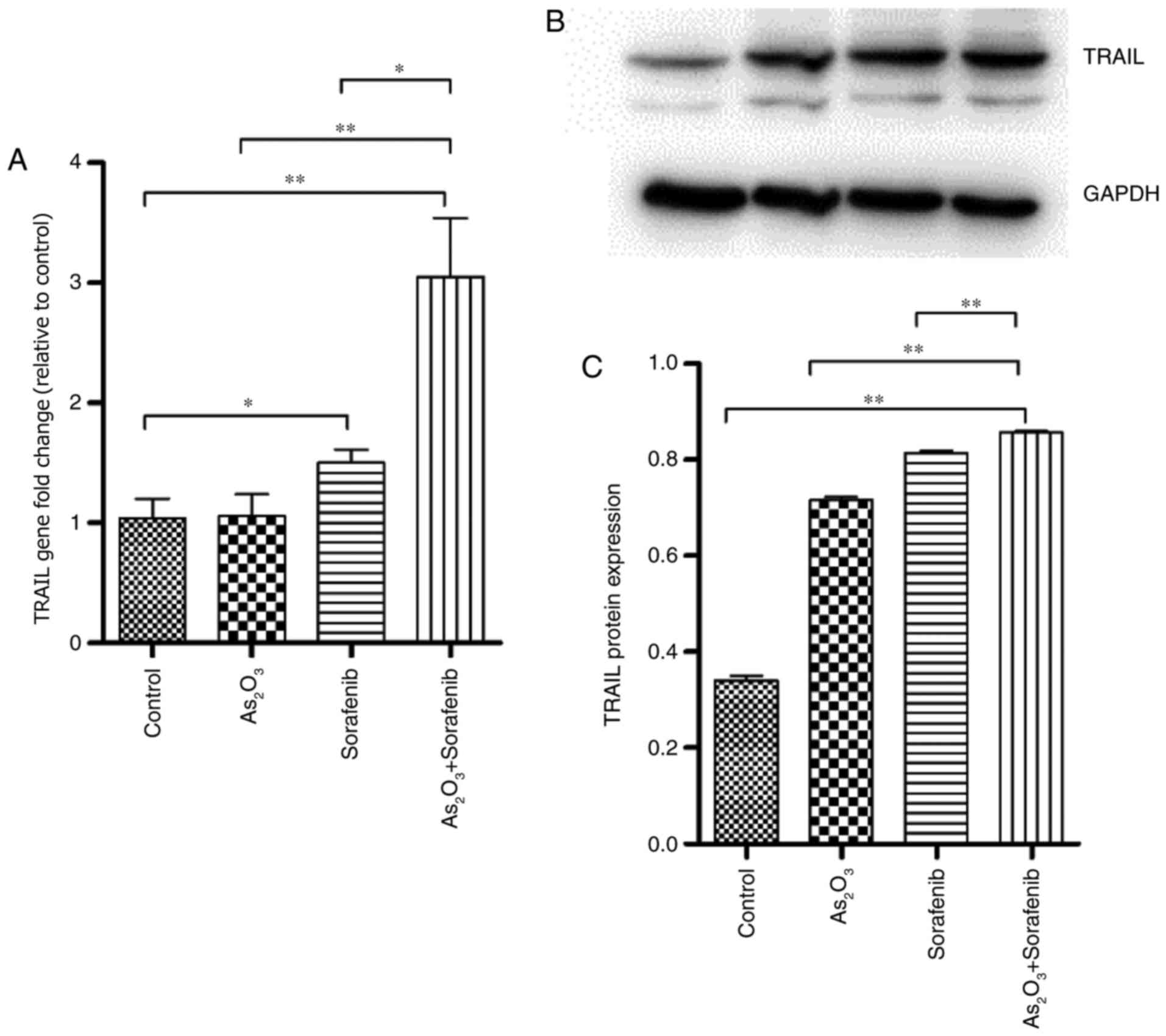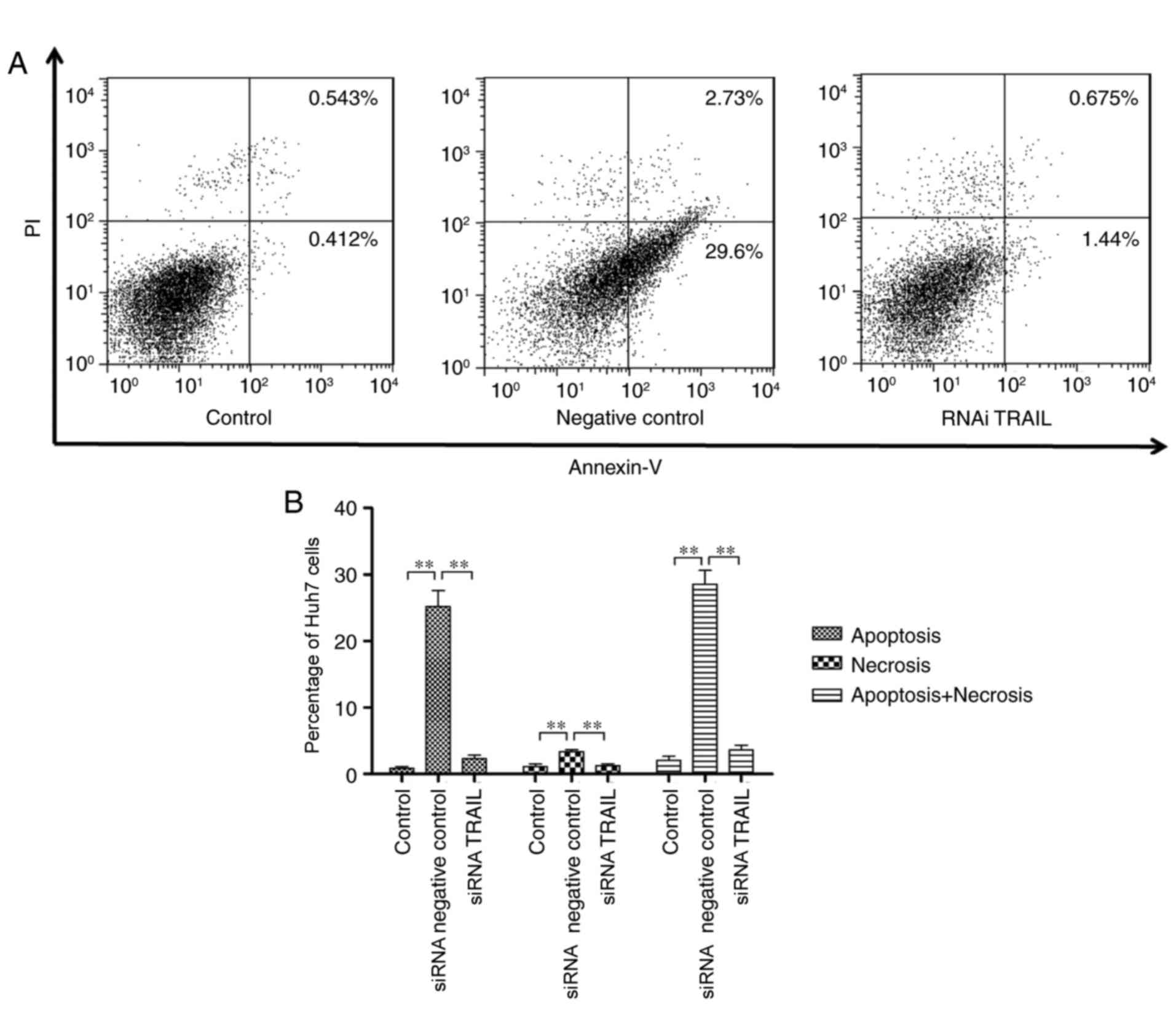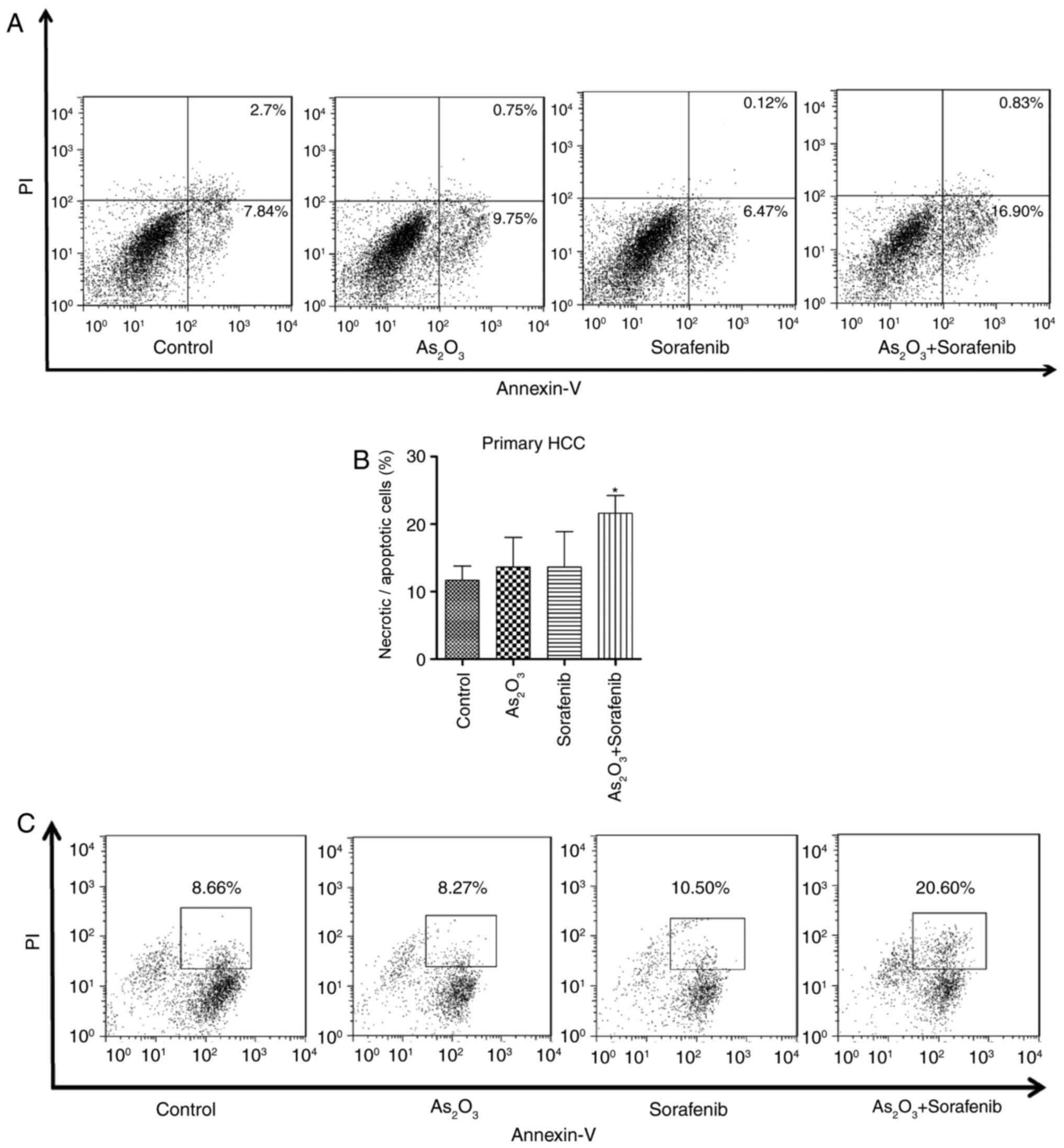|
1
|
Yang Y, Zhao LH, Huang B, Wang RY, Yuan
SX, Tao QF, Xu Y, Sun HY, Lin C and Zhou WP: Pioglitazone, a PPARγ
agonist, inhibits growth and invasion of human hepatocellular
carcinoma via blockade of the rage signaling. Mol Carcinog.
54:1584–1595. 2015. View
Article : Google Scholar : PubMed/NCBI
|
|
2
|
Mgaieth S, Kemp W, Gow P, Fink M, Lubel J,
Nicoll A, Gazzola A, Hong T, Ryan M and Knight V: Impact of viral
hepatitis aetiology on survival outcomes in hepatocellular
carcinoma: A large multicentre cohort study. J Viral Hepat.
24:982–989. 2017. View Article : Google Scholar : PubMed/NCBI
|
|
3
|
Tornai I: Role of environmental factors in
the etiology of hepatocellular carcinoma. Orv Hetil. 151:1132–1136.
2010.(In Hungarian). View Article : Google Scholar : PubMed/NCBI
|
|
4
|
Lischalk JW, Repka MC and Unger K:
Radiation therapy for hepatobiliary malignancies. J Gastrointest
Oncol. 8:279–292. 2017. View Article : Google Scholar : PubMed/NCBI
|
|
5
|
Rich NE, Parikh ND and Singal AG:
Hepatocellular carcinoma and liver transplantation: Changing
patterns and practices. Curr Treat Options Gastroenterol.
15:296–304. 2017. View Article : Google Scholar : PubMed/NCBI
|
|
6
|
Yu WB, Rao A, Vu V, Xu L, Rao JY and Wu
JX: Management of centrally located hepatocellular carcinoma:
Update 2016. World J Hepatol. 9:627–634. 2017. View Article : Google Scholar : PubMed/NCBI
|
|
7
|
Chen CH, Chen MC, Wang JC, Tsai AC, Chen
CS, Liou JP, Pan SL and Teng CM: Synergistic interaction between
the HDAC inhibitor, MPT0E028, and sorafenib in liver cancer cells
in vitro and in vivo. Clin Cancer Res. 20:1274–1287. 2014.
View Article : Google Scholar : PubMed/NCBI
|
|
8
|
Zhu YJ, Zheng B, Wang HY and Chen L: New
knowledge of the mechanisms of sorafenib resistance in liver
cancer. Acta Pharmacol Sin. 38:614–622. 2017. View Article : Google Scholar : PubMed/NCBI
|
|
9
|
Cheng AL, Kang YK, Chen Z, Tsao CJ, Qin S,
Kim JS, Luo R, Feng J, Ye S, Yang TS, et al: Efficacy and safety of
sorafenib in patients in the Asia-Pacific region with advanced
hepatocellular carcinoma: A phase III randomised, double-blind,
placebo-controlled trial. Lancet Oncol. 10:25–34. 2009. View Article : Google Scholar : PubMed/NCBI
|
|
10
|
Liu LL, Zhang MF, Pan YH, Yun JP and Zhang
CZ: NORE1A sensitises cancer cells to sorafenib-induced apoptosis
and indicates hepatocellular carcinoma prognosis. Tumour Biol.
35:1763–1774. 2014. View Article : Google Scholar : PubMed/NCBI
|
|
11
|
Karashima T, Komatsu T, Niimura M, Kawada
C, Kamada M, Inoue K, Udaka K, Kuroda N and Shuin T: Novel
combination therapy with imiquimod and sorafenib for renal cell
carcinoma. Int J Urol. 21:702–706. 2014. View Article : Google Scholar : PubMed/NCBI
|
|
12
|
Luu T, Frankel P, Chung C, Chow W,
Mortimer J, Hurria A and Somlo G: Phase I/II trial of vinorelbine
and sorafenib in metastatic breast cancer. Clin Breast Cancer.
14:94–100. 2014. View Article : Google Scholar : PubMed/NCBI
|
|
13
|
Ravandi F, Yi Arana C, Cortes JE, Levis M,
Faderl S, Garcia-Manero G, Jabbour E, Konopleva M, O'Brien S,
Estrov Z, et al: Final report of phase II study of sorafenib,
cytarabine and idarubicin for initial therapy in younger patients
with acute myeloid leukemia. Leukemia. 28:1543–1545. 2014.
View Article : Google Scholar : PubMed/NCBI
|
|
14
|
Wörns MA and Galle PR: HCC
therapies-lessons learned. Nat Rev Gastroenterol Hepatol.
11:447–452. 2014. View Article : Google Scholar : PubMed/NCBI
|
|
15
|
Emadi A and Gore SD: Arsenic trioxide-An
old drug rediscovered. Blood Rev. 24:191–199. 2010. View Article : Google Scholar : PubMed/NCBI
|
|
16
|
Miller WH Jr, Schipper HM, Lee JS, Singer
J and Waxman S: Mechanisms of action of arsenic trioxide. Cancer
Res. 62:3893–3903. 2002.PubMed/NCBI
|
|
17
|
Zheng CY, Lam SK, Li YY, Fong BM, Mak JC
and Ho JC: Combination of arsenic trioxide and chemotherapy in
small cell lung cancer. Lung Cancer. 82:222–230. 2013. View Article : Google Scholar : PubMed/NCBI
|
|
18
|
Thomas-Schoemann A, Batteux F, Mongaret C,
Nicco C, Chéreau C, Annereau M, Dauphin A, Goldwasser F, Weill B,
Lemare F and Alexandre J: Arsenic trioxide exerts antitumor
activity through regulatory T cell depletion mediated by oxidative
stress in a murine model of colon cancer. J Immunol. 189:5171–5177.
2012. View Article : Google Scholar : PubMed/NCBI
|
|
19
|
Yang X, Sun D, Tian Y, Ling S and Wang L:
Metformin sensitizes hepatocellular carcinoma to arsenic
trioxide-induced apoptosis by downregulating Bcl2 expression.
Tumour Biol. 36:2957–2964. 2015. View Article : Google Scholar : PubMed/NCBI
|
|
20
|
Lin CC, Hsu C, Hsu CH, Hsu WL, Cheng AL
and Yang CH: Arsenic trioxide in patients with hepatocellular
carcinoma: A phase II trial. Invest New Drugs. 25:77–84. 2007.
View Article : Google Scholar : PubMed/NCBI
|
|
21
|
Zhai B, Jiang X, He C, Zhao D, Ma L, Xu L,
Jiang H and Sun X: Arsenic trioxide potentiates the anti-cancer
activities of sorafenib against hepatocellular carcinoma by
inhibiting Akt activation. Tumour Biol. 36:2323–2334. 2015.
View Article : Google Scholar : PubMed/NCBI
|
|
22
|
Moloudi K, Neshasteriz A, Hosseini A,
Eyvazzadeh N, Shomali M, Eynali S, Mirzaei E and Azarnezhad A:
Synergistic effects of arsenic trioxide and radiation: Triggering
the intrinsic pathway of apoptosis. Iran Biomed J. 21:330–337.
2017. View Article : Google Scholar : PubMed/NCBI
|
|
23
|
Xu Y, Li J, Li QJ, Feng YL and Pan F:
Betulinic acid promotes TRAIL function on liver cancer progression
inhibition through p53/Caspase-3 signaling activation. Biomed
Pharmacother. 88:349–358. 2017. View Article : Google Scholar : PubMed/NCBI
|
|
24
|
Kong X, Luo J, Xu T, Zhou Y, Pan Z, Xie Y,
Zhao L, Lu Y, Han X, Li Z and Liu L: Plumbagin enhances
TRAIL-induced apoptosis of human leukemic Kasumi-1 cells through
upregulation of TRAIL death receptor expression, activation of
caspase-8 and inhibition of cFLIP. Oncol Rep. 37:3423–3432. 2017.
View Article : Google Scholar : PubMed/NCBI
|
|
25
|
Clarke N, Jimenez-Lara AM, Voltz E and
Gronemeyer H: Tumor suppressor IRF-1 mediates retinoid and
interferon anticancer signaling to death ligand TRAIL. EMBO J.
23:3051–3060. 2004. View Article : Google Scholar : PubMed/NCBI
|
|
26
|
Cretney E, Takeda K, Yagita H, Glaccum M,
Peschon JJ and Smyth MJ: Increased susceptibility to tumor
initiation and metastasis in TNF-related apoptosis-inducing
ligand-deficient mice. J Immunol. 168:1356–1361. 2002. View Article : Google Scholar : PubMed/NCBI
|
|
27
|
Zhang H, Liu K, Xue Z, Yin H, Dong H, Jin
W, Shi X and Wang H and Wang H: High-voltage pulsed electric field
plus photodynamic therapy kills breast cancer cells by triggering
apoptosis. Am J Transl Res. 10:334–351. 2018.PubMed/NCBI
|
|
28
|
Livak KJ and Scmittgen TD: Analysis of
relative gene expression data using real-time quantitative PCR and
the 2(-Delta Delta C(T)) method. Methods. 25:402–408. 2001.
View Article : Google Scholar : PubMed/NCBI
|
|
29
|
Hellwig CT and Rehm M: TRAIL signaling and
synergy mechanisms used in TRAIL-based combination therapies. Mol
Cancer Ther. 11:3–13. 2012. View Article : Google Scholar : PubMed/NCBI
|
|
30
|
Cho HJ, Kim SS, Wang HJ, Kim BW, Cho H,
Jung J, Cho SS, Kim JK, Lee JH, Kim YB, et al: Detection of novel
genomic markers for predicting prognosis in hepatocellular
carcinoma patients by integrative analysis of copy number
aberrations and gene expression profiles: Results from a long-term
follow-up. DNA Cell Biol. 35:71–80. 2016. View Article : Google Scholar : PubMed/NCBI
|
|
31
|
Ho DW, Lo RC, Chan LK and Ng IO: Molecular
pathogenesis of hepatocellular carcinoma. Liver Cancer. 5:290–302.
2016. View Article : Google Scholar : PubMed/NCBI
|
|
32
|
Llovet JM and Hernandez-Gea V:
Hepatocellular carcinoma: Reasons for phase III failure and novel
perspectives on trial design. Clin Cancer Res. 20:2072–2079. 2014.
View Article : Google Scholar : PubMed/NCBI
|
|
33
|
Abeni E, Salvi A, Marchina E, Traversa M,
Arici B and De Petro G: Sorafenib induces variations of the DNA
methylome in HA22T/VGH human hepatocellular carcinoma-derived
cells. Int J Oncol. 51:128–144. 2017. View Article : Google Scholar : PubMed/NCBI
|
|
34
|
Kobayashi S, Ohkawa S, Kondo M, Morimoto
M, Numata K, Matsunaga K, Okuse C, Suzuki M, Hidaka H, Takada J, et
al: Influence of body surface area on efficacy and safety of
sorafenib in advanced hepatocellular carcinoma. Gan To Kagaku
Ryoho. 39:1065–1070. 2012.(In Japanese). PubMed/NCBI
|
|
35
|
Ziogas IA and Tsoulfas G: Evolving role of
Sorafenib in the management of hepatocellular carcinoma. World J
Clin Oncol. 8:203–213. 2017. View Article : Google Scholar : PubMed/NCBI
|
|
36
|
Tsuchiya N, Narita S, Inoue T, Hasunuma N,
Numakura K, Horikawa Y, Satoh S, Notoya T, Fujishima N, Hatakeyama
S, et al: Risk factors for sorafenib-induced high-grade skin rash
in Japanese patients with advanced renal cell carcinoma. Anticancer
Drugs. 24:310–314. 2013. View Article : Google Scholar : PubMed/NCBI
|
|
37
|
Kudo M: Signaling pathway/molecular
targets and new targeted agents under development in hepatocellular
carcinoma. World J Gastroenterol. 18:6005–6017. 2012. View Article : Google Scholar : PubMed/NCBI
|
|
38
|
Breccia M and Lo-Coco F: Arsenic trioxide
for management of acute promyelocytic leukemia: Current evidence on
its role in front-line therapy and recurrent disease. Expert Opin
Pharmacother. 13:1031–1043. 2102. View Article : Google Scholar
|
|
39
|
Wang X, Jiang F, Mu J, Ye X, Si L, Ning S,
Li Z and Li Y: Arsenic trioxide attenuates the invasion potential
of human liver cancer cells through the demethylation-activated
microRNA-491. Toxicol Lett. 227:75–83. 2014. View Article : Google Scholar : PubMed/NCBI
|
|
40
|
Fei M, Lu M, Wang Y, Zhao Y, He S, Gao S,
Ke Q, Liu Y, Li P, Cui X, et al: Arsenic trioxide-induced growth
arrest of human hepatocellular carcinoma cells involving FOXO3a
expression and localization. Med Oncol. 26:178–185. 2009.
View Article : Google Scholar : PubMed/NCBI
|
|
41
|
Rangwala F, Williams KP, Smith GR, Thomas
Z, Allensworth JL, Lyerly HK, Diehl AM, Morse MA and Devi GR:
Differential effects of arsenic trioxide on chemosensitization in
human hepatic tumor and stellate cell lines. BMC Cancer.
12:4022012. View Article : Google Scholar : PubMed/NCBI
|
|
42
|
Jackson R, Psarelli EE, Berhane S, Khan H
and Johnson P: Impact of viral status on survival in patients
receiving sorafenib for advanced hepatocellular cancer: A
meta-analysis of randomized phase III trials. J Clin Oncol.
35:622–628. 2017. View Article : Google Scholar : PubMed/NCBI
|
|
43
|
Alsaied OA, Sangwan V, Banerjee S, Krosch
TC, Chugh R, Saluja A, Vickers SM and Jensen EH: Sorafenib and
triptolide as combination therapy for hepatocellular carcinoma.
Surgery. 156:270–279. 2014. View Article : Google Scholar : PubMed/NCBI
|
|
44
|
Hu S, Niu H, Inaba H, Orwick S, Rose C,
Panetta JC, Yang S, Pounds S, Fan Y, Calabrese C, et al: Activity
of the multikinase inhibitor sorafenib in combination with
cytarabine in acute myeloid leukemia. J Natl Cancer Inst.
103:893–905. 2011. View Article : Google Scholar : PubMed/NCBI
|
|
45
|
Abou-Alfa GK, Schwartz L, Ricci S, Amadori
D, Santoro A, Figer A, De Greve J, Douillard JY, Lathia C, Schwartz
B, et al: Phase II study of sorafenib in patients with advanced
hepatocellular carcinoma. J Clin Oncol. 24:4293–4300. 2006.
View Article : Google Scholar : PubMed/NCBI
|
|
46
|
Mishra AP, Salehi B, Sharifi-Rad M,
Pezzani R, Kobarfard F, Sharifi-Rad J and Nigam M: Programmed cell
death, from a cancer perspective: An overview. Mol Diagn Ther. Mar
20–2018.(Epub ahead of print). View Article : Google Scholar : PubMed/NCBI
|
|
47
|
Voigt S, Philipp S, Davarnia P,
Winoto-Morbach S, Röder C, Arenz C, Trauzold A, Kabelitz D, Schütze
S, Kalthoff H and Adam D: TRAIL-induced programmed necrosis as a
novel approach to eliminate tumor cells. BMC Cancer. 14:742014.
View Article : Google Scholar : PubMed/NCBI
|
|
48
|
Oh SJ, Erb HH, Hobisch A, Santer FR and
Culig Z: Sorafenib decreases proliferation and induces apoptosis of
prostate cancer cells by inhibition of the androgen receptor and
Akt signaling pathways. Endocr Relat Cancer. 19:305–319. 2012.
View Article : Google Scholar : PubMed/NCBI
|
|
49
|
Zhang XH, Feng R, Lv M, Jiang Q, Zhu HH,
Qing YZ, Bao JL, Huang XJ and Zheng XL: Arsenic trioxide induces
apoptosis in B-cell chronic lymphocytic leukemic cells through
down-regulation of survivin via the p53-dependent signaling
pathway. Leuk Res. 37:1719–1725. 2013. View Article : Google Scholar : PubMed/NCBI
|
|
50
|
Liu JJ, Wang W, Dicker DT and El-Deiry WS:
Bioluminescent imaging of TRAIL-induced apoptosis through detection
of caspase activation following cleavage of DEVD-aminoluciferin.
Cancer Biol Ther. 4:885–892. 2005. View Article : Google Scholar : PubMed/NCBI
|
|
51
|
Diao Z, Shi J, Zhu J, Yuan H, Ru Q, Liu S,
Liu Y and Zheng D: TRAIL suppresses tumor growth in mice by
inducing tumor-infiltrating CD4(+)CD25 (+) Treg apoptosis. Cancer
Immunol Immunother. 62:653–663. 2013. View Article : Google Scholar : PubMed/NCBI
|
|
52
|
Lamhamedi-Cherradi SE, Zheng SJ, Maguschak
KA, Peschon J and Chen YH: Defective thymocyte apoptosis and
accelerated autoimmune diseases in TRAIL-/- mice. Nat Immunol.
4:255–260. 2003. View
Article : Google Scholar : PubMed/NCBI
|
|
53
|
Galal El-Shemi A, Mohammed Ashshi A, Oh E,
Jung BK, Basalamah M, Alsaegh A and Yun CO: Efficacy of combining
ING4 and TRAIL genes in cancer-targeting gene virotherapy strategy:
First evidence in preclinical hepatocellular carcinoma. Gene Ther.
25:54–65. 2018. View Article : Google Scholar : PubMed/NCBI
|



